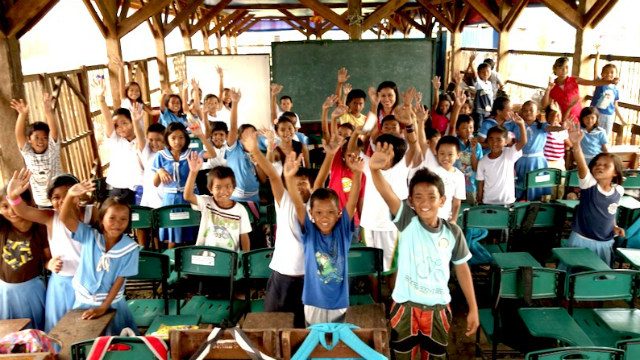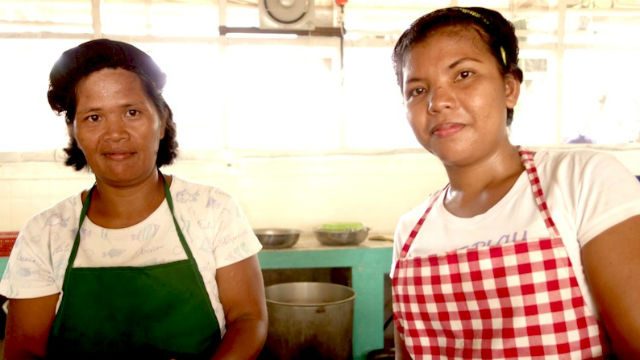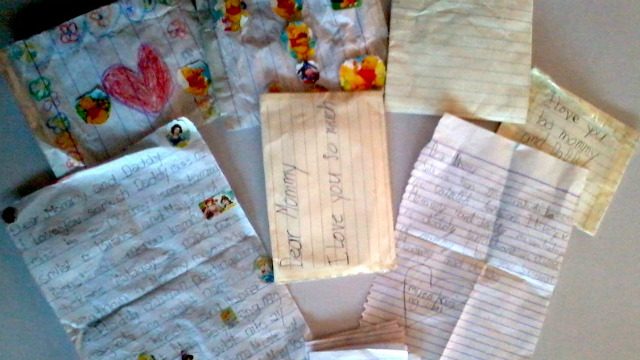SUMMARY
This is AI generated summarization, which may have errors. For context, always refer to the full article.

MANILA, Philippines – “Teacher, vegetarian na kami,” one kid told Miss Eden. (Teacher, we’re already vegetarians!)
The day’s lunch meal was miki con sayote – Shanghai noodles with chayotes in chicken soup. Every day for the past 3 months, the kids of Alang-Alang Central School in Leyte get their daily helpings of rice, meat, and vegetables. Packed in colorful lunchboxes, their meals are delivered to their classrooms warm, appetizing, and prepared with love. (READ: Involving the community against hunger in Kusina ng Kalinga)
“Anong paborito niyong niluluto sa kusina?” I asked. (What’s your favorite meal to cook?)
They each told me their favorite dish but it seems that the camote and tokwa (sweet potato and tofu) in cream of chicken is the runaway hit among them.
As I walked through the school grounds during lunch break, I got a lot of “Hi, Ate!” from random kids. I answer back with a wave or a high five. If not for the hammering noise from the construction nearby, the stack of debris on one side of the campus and tent classrooms on the other, I would have thought that nothing happened here. The kids were smiling, being their usual energetic selves – running about, their giggles and chuckles filling the air. (READ: In Numbers: 6 months after Yolanda)
According to Teacher Eden Ramos, it took some time for things to regain this sort of normalcy. There was a time when half the kids weren’t coming to class. At the start of the school year, absenteeism was high. (READ: Preventing chronic malnutrition in emergencies)
“After the typhoon, marami na talagang hindi pumapasok kasi wala talagang hanap-buhay,” she shared. “Hindi talaga sila pumapasok kasi anong kakainin nila pag pumapasok sila? Wala naman silang pagkain kasi wala namang hanap-buhay. Pumapasok lang sila paminsan-minsan mga once a week, twice a week.”
(After the typhoon, many already dropped out of school since there is no livelihood. They do not go to school because what would they eat if they did? They do not have any food because there is no source of income. Some children only attend classes once or twice a week.)
Having two kids attending the school herself, she shared that it’s been a great help to her and other parents that they didn’t have to worry about what their children would eat for lunch. As families try to recover financially, their children’s meals in school give them some breathing room.

Since August, lunch for the entire school population of 1,600 kids is served by Kusina Ng Kalinga (Care Kitchen). Kusina ng Kalinga sits in one of the classrooms converted into a heavy duty kitchen.
It starts bustling at 3 am – preparing huge cauldrons for boiling rice; a lot of peeling, slicing, and dicing of vegetables; marinating the meat; scooping and packing food into these nice little lunchboxes. Everything has to be done with clockwork efficiency to make sure everything is prepared by lunchtime.
It may sound like an assembly line, but the reality is, this kusina is probably the warmest place in school – and it’s not because of all the food that’s being cooked. Kusina ng Kalinga’s warmth springs from the love poured in by the people doing the cooking. It is a labor of love from the volunteers and mothers who run it.
I met volunteers Anj, Jochz, Jack, Rizel, Ate Myra and Ate Angie – I call them the kitchen staples whose dedication provides the lifeline for the operations. I also had the privilege of meeting Nanay Nelita, Nanay Lenlen, and Ate Aisa. Their kids attend Alang-Alang Central school, and while they are only required to volunteer on specified schedules, they come to the kitchen almost every day.
Nanay Nelita, in particular, has to walk an hour from her house to the school, along with her 3 kids. She helps more than the usual because the kitchen is important to her, and she wants it to continue. But I’m sensing that she’s enjoying it too.
“Naging kaibigan ko na din sila dito,” she said. (They have already become my friends.)
A caring community is a natural outcome of people working together. Just as kids chatter in their classrooms, the nanays and volunteers do the same in this kitchen. They even broke into a song when one good 80s power ballad was played on the radio. I wonder if they ever got reprimanded by the teacher next door for being a bit too noisy.
This bustling hub doesn’t go unnoticed by the kids. At any given time, kids loiter outside the kitchen, saying hi to their ates and kuyas, dropping by to give them a hug, or just being curious to see what’s cooking for lunch.

I was outside chatting with a few of them – Shaina, Jackie, May Joy, Bianca, and Nicole. About nothing in particular, just child stuff. Later on they called me and handed me a letter with stickers on it.
“Ate, puwede pakibigay kay Mommy Jochz?” she asked. (Ate, can you please hand this to Mommy Jochz?)
Jochz told me she gets these love letters every day. No need to ask her what inspires her to do this work.
“Ate, huwag kayong aalis, ha?” the children would ask. (Ate, please don’t leave.)
It’s been ages since I’ve been to one of these. I remember having to line up by height; the teacher’s command – arms forward, raise!; us perspiring and squinting under the sun. I remember worrying about kid stuff, but never about the future. Maybe because mine was never threatened by a catastrophe, or by poverty.
Looking at the kids, I wonder how they see theirs. I wish they see it bright. But if not, I wish they have hope.
More than the meals, if there’s anything that Kusina ng Kalinga aspires to give the children, it is this. As food fills their stomachs, their souls are fed with hope. In due time, they will be able to fully recover. The future remains bright for them. – Rappler.com
This article first appeared on Gawad Kalinga’s website. We are republishing this with their permission. To learn more about Gawad Kalinga’s Kusina ng Kalinga, please visit their website here.
How can we help fight hunger? Recommend NGOs, report what your school or LGU is doing, or suggest creative solutions. E-mail us at move.ph@rappler.com. Be part of the #HungerProject.
Add a comment
How does this make you feel?
There are no comments yet. Add your comment to start the conversation.